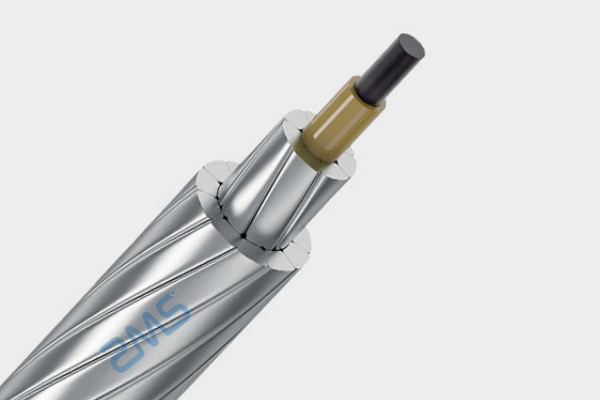ACCC/TW driver
The ACCC/TW driver (Aluminum Conductor Composite Core – Trapezoidal Wire) is a new generation HTLS cable, Designed to meet growing performance needs of electricity transport networks. It is distinguished by a light and resistant composite soul, Replacing the traditional steel heart, as well as by trapezoidal aluminum threads (TW) which increase the density of the driver's metal without weighing down the cable.
Used in existing line strengthening projects, urban modernization or energy transport over long distances, The ACCC/TW driver increases capacity without changing pylons. It offers a higher current transport capacity, a significant reduction in energy losses, as well as increased resistance to the thermal arrow.
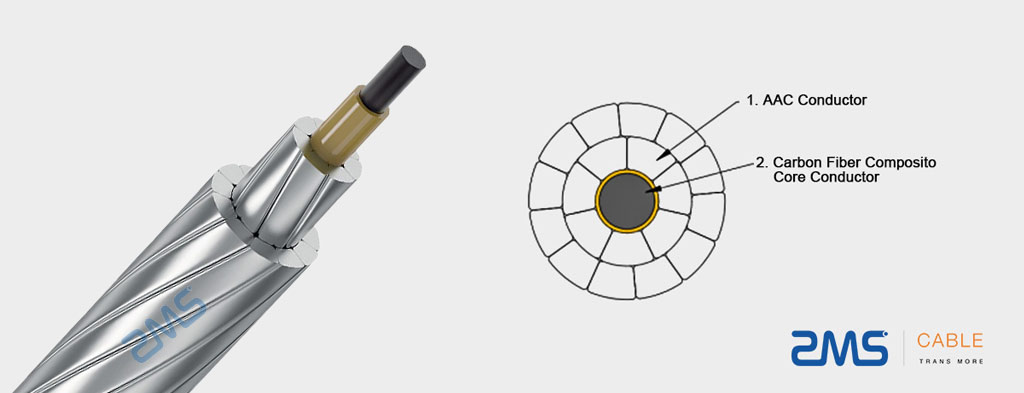
Construction of the ACCC/TW driver
| Structure | Material | Technical function and characteristics |
| Composite soul | Carbon fiber + fiberglass + epoxy resin | Very high mechanical resistance (2 150–2 400 MPa), low thermal dilation, lightness, Excellent corrosion resistance |
| Couches d’aluminium | Aluminum High purity type 1350 selon ASTM B857/B609 | Trapezoidal conductors, increasing the filling rate of 10 30% compared to round wires, which improves conductivity |
| Toronnage structure | Concentric toronnage in multiple layers with trapezoidal threads | Compact structure, smooth surface, Reduction of vibrations and losses due to the corona effect |
Application
- High voltage electricity transport over long distance : Ideal for Modernization projects of HV lines in UHV (up to ± 500KV and more).
- Capacity building on existing lines : makes it possible to double the transport capacity without modifying the height of the existing pylons.
- High temperature or high -loading environments : Suitable for dense or industrial urban areas, where thermal stability is crucial.
- Coastal or high corrosion regions : The composite soul has excellent resistance to corrosion and oxidation.
- Freezing areas, in the wind or storms : Low thermal arrow and high mechanical resistance, reducing the risk of failure in the event of bad weather.
- Integration of renewable energy : adapted to the transport of solar or wind energy to the main network, with better stability and efficiency.
Technical data
| Section(mm²) | Driver structure | Insulation material | Insulation thickness (mm) | Approximate total diameter (mm) | Approximate weight (kg/km) | |
| Phase driver (compact aluminum) No./mm | Neutral driver (alloy) No./mm | |||||
| 1×16+1×16 | 7/1.72 | 7/1.72 | XLPE(HDPE) | 1.2 | 12.5 | 110.1 |
| 1×25+1×25 | 7/2.15 | 7/2.15 | 1.2 | 14.9 | 163.9 | |
| 1×35+1×35 | 7/2.54 | 7/2.54 | 1.4 | 17.5 | 229.0 | |
| 1×50+1×50 | 7/2.92 | 7/2.92 | 1.4 | 20.1 | 300.0 | |
| 2×16+1×16 | 7/1.72 | 7/1.72 | 1.2 | 14.2 | 175.8 | |
| 2×25+1×25 | 7/2.15 | 7/2.15 | 1.2 | 16.7 | 258.4 | |
| 2×35+1×35 | 7/2.54 | 7/2.54 | 1.4 | 19.7 | 361.2 | |
| 2×50+1×50 | 7/2.92 | 7/2.92 | 1.4 | 22.5 | 472.1 | |
| 3×16+1×16 | 7/1.72 | 7/1.72 | 1.2 | 16.3 | 241.5 | |
| 3×25+1×25 | 7/2.15 | 7/2.15 | 1.2 | 19.1 | 353.6 | |
| 3×35+1×35 | 7/2.54 | 7/2.54 | 1.4 | 22.5 | 493.5 | |
| 3×50+1×50 | 7/2.92 | 7/2.92 | 1.4 | 25.7 | 644.1 | |
| Section(mm²) | Number of threads | Diameter of a wire (mm) | Driver diameter (mm) | Lineage (kg/km) | Nominal mechanical resistance (kN) | Continuous resistance (Ω/km) |
| 18 | 7 | 1.83 | 5.49 | 50.4 | 5.43 | 1.7896 |
| 28.8 | 7 | 2.29 | 6.86 | 78.7 | 8.49 | 1.1453 |
| 46 | 7 | 2.89 | 8.68 | 125.9 | 13.58 | 0.7158 |
| 72.5 | 7 | 3.63 | 10.9 | 198.3 | 21.39 | 0.4545 |
| 115 | 19 | 2.78 | 13.9 | 316.3 | 33.95 | 0.2877 |
| 144 | 19 | 3.10 | 15.5 | 395.4 | 42.44 | 0.2302 |
| 184 | 19 | 3.51 | 17.6 | 506.1 | 54.32 | 0.1798 |
| 230 | 19 | 3.93 | 19.6 | 632.7 | 67.91 | 0.1439 |
| 288 | 19 | 4.39 | 22 | 790.8 | 84.88 | 0.1151 |
Characteristics of the ACCC/TW driver

High current capacity & increased efficiency
Compared to traditional ACSR type drivers, The ACCC/TW driver can carry about twice as much current. Its electrical resistance is reduced by 25 40%, which makes it possible to considerably reduce online losses, energy consumption and CO₂ emissions.
Low thermal arrow & Excellent stability at high temperature
Thanks to its composite soul in carbon and glass fiber, The driver has a very low thermal dilation coefficient. Even at temperatures above 80 ° C, The increase in the arrow remains negligible, guaranteeing the mechanical stability of long races.
High mechanical resistance & Excellent corrosion resistance
The soul in carbon/glass fiber reaches resistance to traction of 2 150 has 2 400 MPa, or about 1,7 has 1,9 times that of a steel soul, while being insensitive to corrosion.
Compact structure
Design with trapezoidal aluminum threads increases the transverse aluminum section of 10 at 30% with equal diameter, which significantly improves conductivity.
Excellent wind and frosty outfit
Its light structure and its composite soul resistant to fatigue make it possible to limit the arrow even under the loads of wind or ice, thus reducing maintenance needs.
Long -term profitability
Although the initial cost is higher (2,5 has 3 times that of ACSR), It is often useless to strengthen or enhance existing pylons. This allows substantial savings on installation costs, long -term maintenance and energy losses.
Comparaison des câbles ACCC avec d'autres câbles
ACCC VS TACSR driver
| Criteria | ACCC | Proficiency |
| Operating temperature | Can reach 180 ° C at 200 ° C | Generally between 150 ° C and 210 ° C |
| Dilation coefficient | Composite soul with low dilation, Stable arrow even at high temperature | Higher coefficient, The arrow increases with the temperature |
| Current carrying capacity | Capacity greater than that of standard ACSR, equal or greater than the tacsr for the same section | Environ 1,5 has 2 times greater than classic ACSR |
| Clean weight | Lighter than the tacsr (lighter composite soul than a steel soul) | Heavier than the ACCC |
| Corrosion resistance | The composite soul does not rust, Excellent corrosion resistance | The steel soul must be galvanized, Risk of residual corrosion |
| Cost | Higher cost | Cost lower than the ACCC |
Résumé
- ACCC : Haute performance, light, low arrow, energy saving, But higher cost and more technical poses.
- Proficiency : Improved ACSR version, higher thermal performance, Interesting cost-effectiveness, Simple replacement.
ACCC/TW VS ACSR driver
| Criteria | ACCC/TW | ACSR |
| Type | HTLS driver (High Temperature Low Sag) | Traditional aluminum-academy driver |
| Central soul | High resistance composite fiber | Galvanized steel wire |
| Operating temperature | Up to 200 ° C without loss of performance | Limited to around 80-90 ° C |
| Arrow | Bass arrow, Even at high temperature | Significant thermal load arrow |
| Transport capacity | Higher (until 2 times the capacity of an ACSR of the same section) | Limited capacity |
| Weight | Light thanks to the composite soul | Heavier |
| Compatibility with existing pylons | Oui, Ideal for replacing ACSR cables | Already in place in existing networks |
| Standards | ASTM certified / CE / IEC, compliant with international standards | Generally in accordance with local standards |
| Initial cost | Higher | Cheaper |
| Long -term profitability | Excellent (reduced loss, superior, increased lifespan) | Less efficient long -term |
FAQ - ACCC/TW driver
1. What is the difference between an ACCC/TW driver and a traditional ACSR ?
The ACCC/TW driver is a type of HTLS driver (High Temperature Low Sag) Designed to replace ACSR cables. Unlike traditional drivers, It uses a composite soul which allows high temperatures up to 200 ° C with a reduced arrow.
2. Why replace an ACSR cable with an ACCC/TW driver ?
ACSR replacement with an ACCC/TW makes it possible to considerably increase electricity transport capacity without modifying the existing infrastructure. It is ideal for projects to modernize high -voltage electrical networks.
3. Is the ACCC/TW driver certified ?
Oui, The ACCC/TW drivers offered by ZMS Cable are ASTM certified, CE and IEC, Guaranteeing performance in accordance with the strictest international standards for industrial and energy applications.
4. What are the advantages in terms of arrow and temperature ?
Thanks to his composite fiber soul, The ACCC/TW driver has a low arrow even at high temperature. It can operate permanently at 150 ° C or even 200 ° C, without compromising network safety or performance.
5. In what types of projects do we use the ACCC/TW driver ?
It is mainly used in high voltage lines, network strengthening projects, or for areas where mechanical and thermal stresses are high. It is perfectly suitable for demanding environments such as hot regions or long worms.
6. ZMS Cable can provide personalized solutions ?
Absolutely. ZMS Cable offers personalized HTLS conductive solutions, Including the ACCC/TW model, with technical assistance, Technical sheets and international delivery.
Cooperation with ZMS
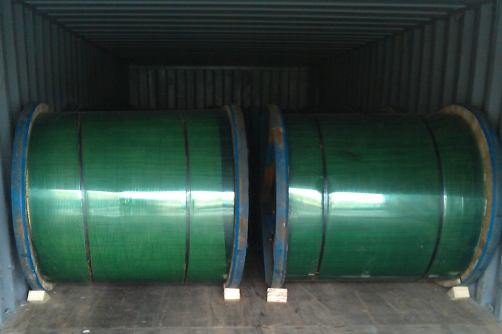
L'Indonésie et ZMS vont collaborer sur le projet de câble ACCC/TWC
Product : ACCC Laredo
Quantity : 16 tons
Packaging : Wooden barrel
ZMS has perfectly implemented the concept of just-in-time production and delivered its products within the time limits, sous 30 days. Thanks to its numerous certifications and its delivery times much higher than the average of the sector, ZMS has won the confidence and word of mouth of many customers.
Packaging & Services – ZMS CABLE
Personalized manufacturing service (OEM / ODM) : Custom cable design and production according to your technical specifications, with customization of the marking, Colors and packaging.
Rapid global logistics : Shipping shipping, terrestrial or air to more than 120 pays ; Flexible delivery according to your deadlines.
Certified quality : All products are tested before shipping ; conformity this / IEC / ISO ; test reports provided on request.
Neat and customizable packaging : ZMS cables are packaged on wooden coils, wavy boxes or drums, with hermetically sealed ends for moisture protection. Outdoor marking can be printed on request with waterproof materials.
Professional support 24/7 : Multilingual technical and commercial assistance available at each stage of your project.
You might also love
- News
- Blog
- Electric cable types

HTLS driver the HTLS driver (High Temperature Low Sag Conductor) is a new generation aerial driver specially designed for ...
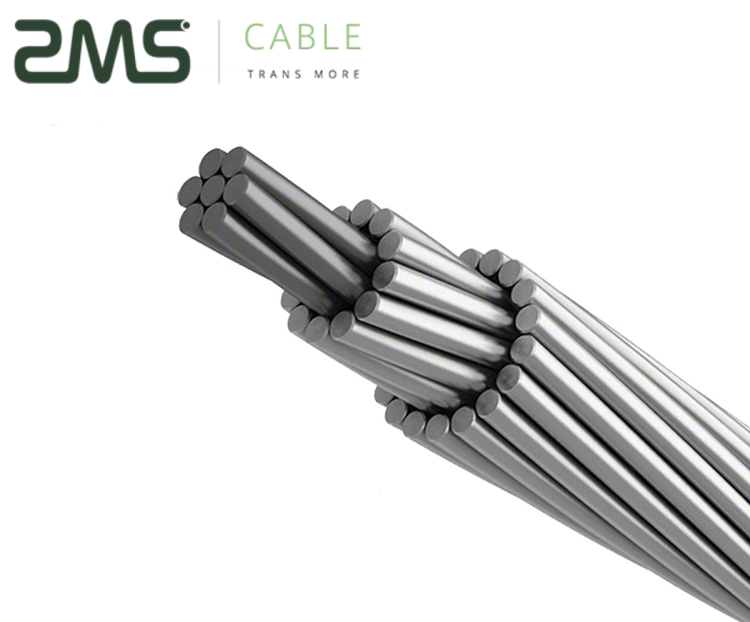
ACSR drivers and tacsr ACSR (Aluminium Conductor Steel Reinforced) is a high performance naked driver used for the lines of ...
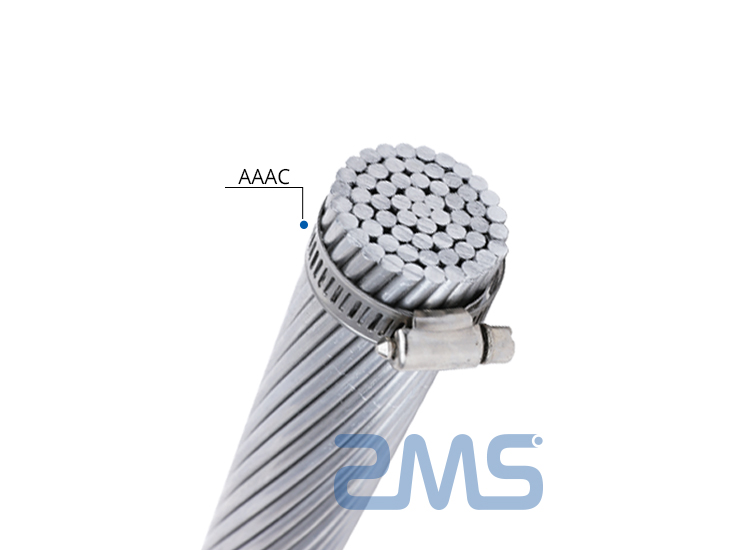
AAC cable, AAAC, ACSR AAC, AAAC, ACSR are aluminum conductive cables. The driver has no insulation and ...

